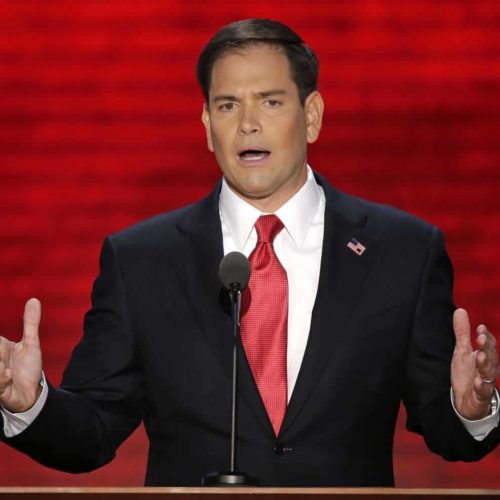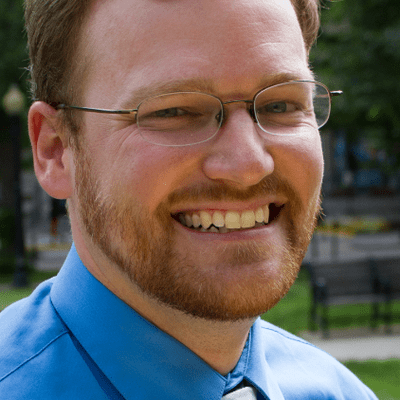Introduction
Dec. 16, 2015: This story has been corrected.
Ahead of tonight’s critical Republican presidential debate, Sen. Marco Rubio of Florida has primed himself by becoming an ascendant media messaging force.
Rubio and his super PAC allies aired more than 2,500 TV ads during the first two weeks of December, according to a Center for Public Integrity analysis of preliminary data provided by Kantar Media/CMAG, a firm that tracks TV ads on broadcast and national — but not local — cable.
That amounted to nearly two TV ads every hour targeting voters in the first-in-the-nation primary state of New Hampshire — and about five-and-a-half TV ads every hour in Iowa, which hosts the nation’s first nominating caucus on Feb. 1. None were attack ads. All praised Rubio.
Television advertisements are a crucial way of reaching voters. They can also be incredibly expensive, with groups sometimes paying tens of thousands of dollars to air a single spot during a prime programming window.
Team Rubio’s early December advertising barrage represented more ads supporting any other candidate in the race except one — fellow Floridian Jeb Bush, the state’s former governor, who has struggled to gain traction despite a months-long advertising blitz underwritten by his super PAC supporters.
Bush and his supportive super PAC aired about 3,000 TV ads during the first two weeks of December, according to Kantar Media/CMAG. But all the ads — or money — in the world don’t necessarily buy a candidate love, said Iowa State University political science professor David Andersen.
“Bush is coming across as kind of bland and stale,” Andersen said. “He’s having a really tough time resonating with voters.”
More than 90 percent of the pro-Bush ads were sponsored by Right to Rise USA, the super PAC that Bush helped found and for which he helped raise millions of dollars prior to officially entering the 2016 White House race.
Slightly more than half of the pro-Rubio ads so far in December have been sponsored by Rubio’s own campaign. Unlike super PAC ads, candidates have full control over the ads their own campaigns sponsor.
Rubio has been gaining ground in Iowa, where, for the moment, business tycoon Donald Trump and Sen. Ted Cruz of Texas lead.
And Rubio now ranks second behind Trump among New Hampshire voters, according to an aggregation of polls by Real Clear Politics. The Granite State holds the first primary of the presidential race on Feb. 9.
To fuel his campaign spending, Rubio has also been endeavoring to win over Republican rainmakers such as casino magnate Sheldon Adelson, the chairman and chief executive officer of the Las Vegas Sands Corp., which owns the Venetian casino, where tonight’s GOP presidential debate will be conducted.
Throughout much of 2015, Rubio was boosted on the TV airwaves by a nonprofit group called the Conservative Solutions Project. Because it is organized under section 501(c)(4) of the tax code, is not required to publicly disclose its funders despite engaging in election season politics.
The group reportedly spent more than $8.5 million on ads touting Rubio between June and late November. Since then, it’s been off the airwaves, and its sister super PAC — known as the Conservative Solutions PAC — has revved its political engine.
Filings with the Federal Election Commission show the Conservative Solutions PAC has spent more than $3.9 million so far this month on media buys and online advertising.
The pro-Rubio super PAC’s major funders include billionaire auto dealer Norman Braman of Miami, a former owner of the Philadelphia Eagles NFL team, and billionaire Larry Ellison of California, the founder of computer technology company Oracle Corp.
Kyle Kondik, a political analyst at the University of Virginia’s Center for Politics, said it was a “smart move” for Rubio to wait until closer to the start of the primaries to begin advertising in earnest.
“What residual benefit remains from running ads in October now?” he said.
“I don’t even know if there is any,” he continued. “The effects [of TV ads] can be fleeting.”
Overall, the Republican presidential race has already seen more than 47,000 ads this year, according to the Center for Public Integrity’s review of Kantar Media/CMAG data.
Candidates’ own campaigns have been responsible for about one of every five TV ads in the race — a percentage that has been increasing in recent weeks.
Well-funded outside groups — including super PACs and “dark money” nonprofit groups — have, meanwhile, been responsible for about four of every five TV ads in the contest.
Right to Rise USA — which has spent more than $40 million promoting Bush’s candidacy so far — has alone been responsible for about one of every three ads in the Republican presidential race.
Unlike candidates’ own campaigns, super PACs and politically active nonprofits can collect contributions of unlimited size from individuals, corporations and labor unions.
Presidential candidates can only raise up to $5,400 per person, and they may not accept money from companies or unions.
Notably, Trump, the Republican Party front-runner, has not aired a single TV ad, according to Kantar Media/CMAG.
His campaign, however, has paid for at least $200,000 in radio advertising, and it has also benefited from extensive exposure on news and entertainment programs.
The campaigns of Bush, Rubio and Trump did not respond to requests for comment. Nor did representatives of the Conservative Solutions PAC, Conservative Solutions Project or Right to Rise USA.
Correction, Dec. 16, 2015, 2:17 p.m.: An earlier version of this story misspelled the name of billionaire Norman Braman.
This story was co-published with Al Jazeera America.
Read more in Money and Democracy
Money and Democracy
Tea party groups see win in end-of-year omnibus bill
New measure initially proposed in wake of scandal about IRS treatment of conservative nonprofits
Money and Democracy
New FEC chairman aims to calm agency at war with itself
Republican Matthew Petersen takes reins of gridlocked elections watchdog


Join the conversation
Show Comments